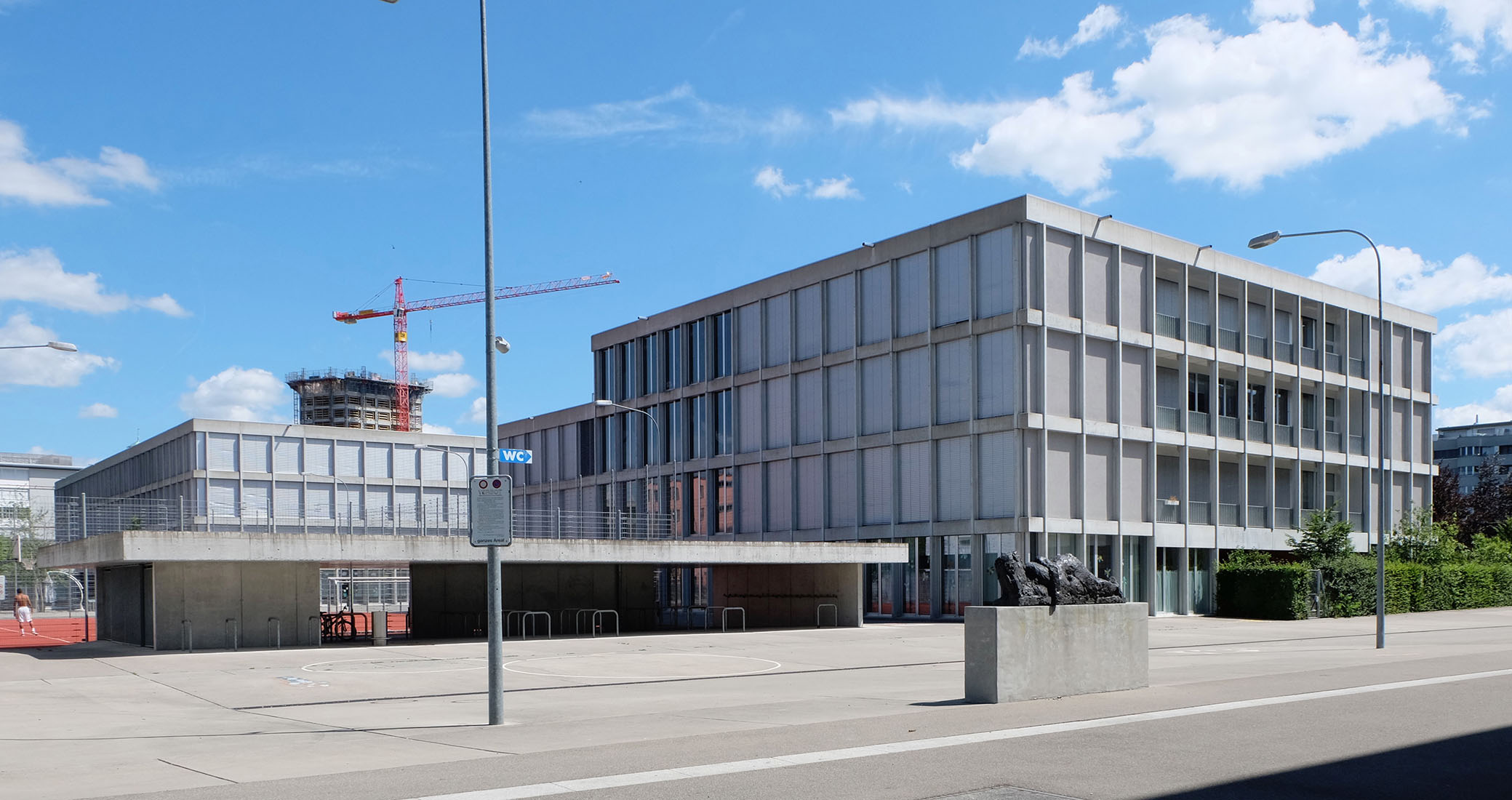 |
 |
 |
 |

Schoolhouse 'Im Birch'
Margrit-Rainer-Strasse 5, Zürich
2004
The architectural competition for a large school building in the Zurich city district Oerlikon was won by Peter Märkli in the year 2000. Oerlikon is a formerly industrial area on the edge of Zurich, which at this time underwent a comprehensive redevelopment. The emergence of a whole new quarter on the large former industrial areas has also made the construction of school space necessary. The large school complex contains a kindergarten, a primary school and a high school with the associated special usages such as a canteen, music rooms, a large sports hall, a gymnasium and a library. These special areas also serve the neighborhood and have their own entrance, as have the three levels of education and the kindergarten. The decision of the municipality to join the various schools with a large number of classes within one large complex has been variously criticized. In fact the schoolhouse 'Im Birch', which was finished in 2004, is the largest one in Zurich.
The school complex is grouped in three massive volumes, two of which are intertwined. Their arrangement creates several places which receive their own charater by using concrete, gravel or artificial surface. According to the Architect Peter Märkli all these individual elements are set on a platform of concrete slabs, that serves to tie them together. The school is located between two parks which the children use during the breaks, as known of some urban schools of the 19th century. There is no front or back at this school, the pupils reach the building from all sides. The kindergarten is located on the ground floor of the primary school, oriented towards east and south. The ceiling height in the kindergarten measures 4 meters in contrast to the 3.5 meters elswhere. Each kindergarten classroom has access to an outdoor space of equivalent size. On the southern side of the ensemble is a large exterior space, placed between two parks and suited for all kinds of outdoor events.
The interior organization is based on an experimental teaching model where teachers share responsibility for two or three classes. As a consequence the rooms are arranged in clusters to facilitate supervision. The classes are grouped together by years so that each part of the school forms a distinct zone, with its own kind of common space and outdoor area. In comparision with a conventional school with corridors, this kind of organization results in a greater building depth and consequently requires a higher percentage of glazing to ensure adequate natural light. On the ground floor the windows reach from floor to ceiling as in the other storeys. The school opens with the workshop spaces to the surroundings. According to Peter Märkli transparency shoud reign between inside and outside. Transparency also characterizes the interior. Not only to draw light in to the depth of the floor plan through walls made of glass blocks or interior glass separations, but also to have as much spatial cotinuity as possible. In this respect the clusters are to be mentioned in particular. Three or four classrooms are arranged around a common space, toward which they are fully glazed. This arrangement allows this space to be used for common work. Within a short time this school building has attracted a great stir in the media. Partly because the walls made of glass, the curtains, the walls made of exposed concrete, the radiators and the visible ventilation of sheet metal. In short, because of the many materials that can be found in the school. The materials are used in a manner reminiscent of the Smithsons. Similar to the attitude of the British architect couple, parts which seem to originate from a catalog were chosen and arranged to become wholeness.
The facade is made of prefabricated concrete elements. These develop evenly over the four storeys, the entrances are only highlighted by somewhat larger lintels. Unlike the flat, horizontal elements, the vertical elements are narrow and deep. They form a grid with fields which are glazed or plastered. The floor to ceiling windows feature flush frames made of aluminum, which bisect the fields. Thus a uniform envelope spans around the volume. The facades have a very strict appearance in terms of shape ond colours. The rigorous grid as well as the gray and silver give the building a silent and classic impression.
